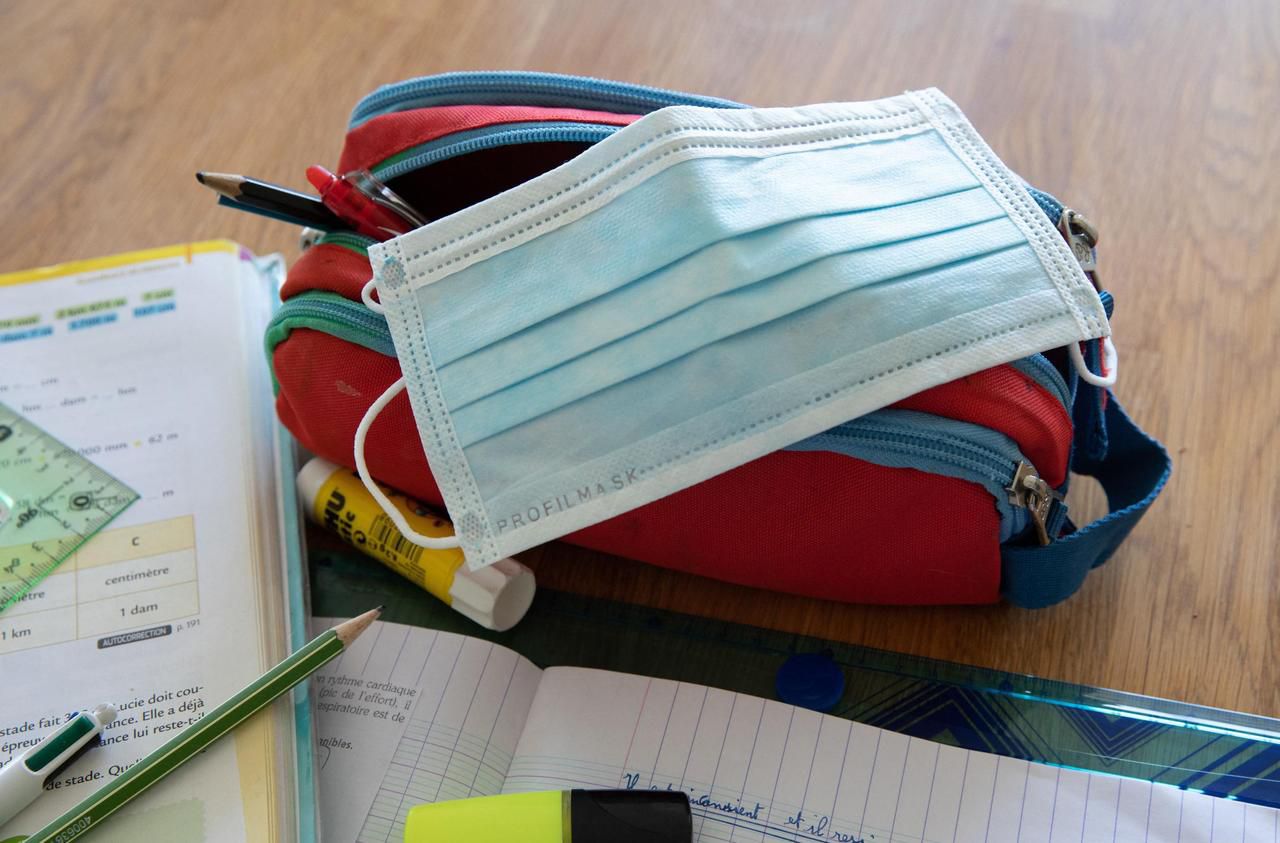How far away the next summer vacation seems ... According to the official National Education calendar, the last day of school is scheduled for Tuesday, July 6.
Almost ten and a half weeks after the general resumption of classes, on April 26 (and face-to-face from May 3 for the second degree).
“I have the feeling of a marathon whose end you can't see.
The children are going to be untenable.
This is the first time that this has given me this sensation, ”summarizes Alice, a school teacher in Beaumont-en-Cambrésis (North).
And for good reason: it's unheard of for a long time.
For the first time in fifty years and the establishment of the operation in three (rotating) zones of the school calendar, the government, this year, recorded the homogenization of the dates of the spring holidays, as part of the general closure schools set up to stop the spread of the Covid-19 virus. Traditionally, the period following the Easter holidays oscillates between seven weeks for the favored areas, and ten, or even eleven, for the less fortunate. It was less when the 4.5-day week was in place in some schools, between 2013 and 2017. Thus, with this exceptional decision linked to the health crisis, there was no delay in the dates of resumption. courses depending on the area,nor millions of students for whom the period between the start of Easter and the start of the summer holidays seems only a leap of faith: they are 12.5 million engaged all together in a tunnel that seems endless.
Fewer bridges to breathe
"A general recovery for all, that had not taken place since the 1970s, when the zones were created to meet the needs of the actors of tourism", remembers Claude Lelièvre, historian of education, author of “The school of today in the light of history” published in March (editions Odile Jacob, 320 p., 22.90 euros). This zoning has created "a structural imbalance", in which, depending on where you live, "between vacations can appear very short ... or very, very long". Thus, “a time that seemed interminable to families and teachers has always been a source of questions,” continues Claude Lelièvre. Historically, a century ago, this concerned the period between the start of the school year - which took place at the beginning of October - and the Christmas period, because the All Saints holidays did not really exist. "
Another factor, and not the least, makes the wait for summer holidays even longer: while the months of May and June are usually cut off by several public holidays causing four-day bridges, it is less. the case this year. On May 1 and 8, falling on Saturdays, only Ascension Thursday, May 13, will allow you to breathe a little. Unheard of for at least ten years.
By way of comparison, in the 2018-2019 school year - the last being out of competition with the hard confinement between mid-March and May 11 - schoolchildren in zone B had, of course, whipped more than ten weeks before the great rest ... but these were interspersed with five public holidays and a bridge.
Their comrades in zones A and C had worked one or two weeks less, again strewn with "off" days.
A more convincing example, in 2014-2015: barely ten weeks of lessons in zone A, almost eight for C and… seven for zone B!
"A moment of rising tensions"
"One week less, even a few days, when we are at the end of the year, we must not believe that this does not change anything for us and the children", supports Marc, teacher in a school in Seine-Saint-Denis.
So, in the playgrounds, we are already pulling the tongue, after a year marked by the management of the health crisis and its changing protocols. "As soon as we learned the date of the resumption, April 26, we reflected with our colleagues: it's a very long schedule, after a trying year, where we had to manage disoriented students, continues Alice, who takes care of CE2 students. We know that the closer we get to the end of the year, the more wear and tear on the children. They will be more nervous, difficult to hold. We will have to raise the tone and do cooler activities during the last fortnight. "
In general, fatigue has an "undeniable" effect on schoolchildren, judge Saphia Guereschi, national secretary of Snics-FSU, the school nurses' union.
“Cognitive abilities are lower, there is a problem with managing emotions,” she continues.
The end of the year is, like the pre-Christmas period, traditionally a time of heightened tensions.
"
"What tiresome are dense days!"
In this case, would it have been necessary to “shorten” the school year, to bring the end of classes forward by one week? For Claire Leconte, chronobiologist and professor emeritus of educational psychology, that is not the concern. “In all the other countries of the world, there are also periods of nine, ten, sometimes eleven weeks between each leave. Moreover, none of them has as many vacations as France, ”she recalls first, while saying“ quite understand ”that the last quarter seems a marathon,“ especially after a such year ”. According to her, “the problem is that French teachers have 140 days to deliver the program, while others sometimes have 200 days. What tires children are busy days! "
How, in this case, to cash the end of the year? “To parents, I say: put your children to bed at regular times, not too late, and prefer the
replay
of programs during the day rather than a TV night. And, to the teachers, I tell them not, on the grounds that the flagship teaching programs must be closed, to sacrifice sport, the plastic arts or music. They are the breaths that will keep children going until summer. ".











